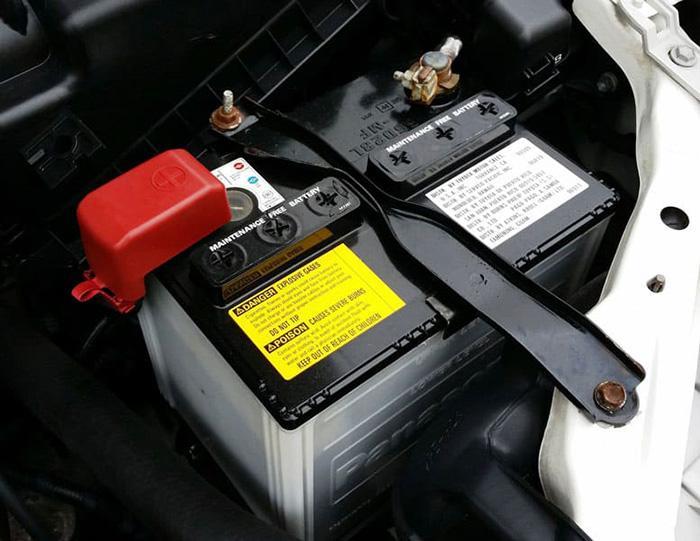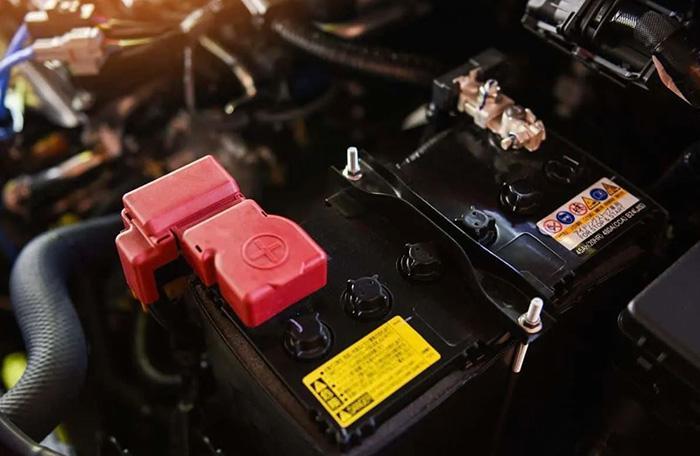A car battery is one of the most important parts of your car’s ecosystem. Not always is it easy to tell if your battery is bad or not. But there is a big difference in how a new battery works and how a low but healthy battery is charged.
Batteries for cars sold today are already charged when they leave the factory. On the top of the battery should be a sticker with the date of the last time it was charged.
You Are Watching: Do Car Batteries Come Charged Updated 04/2024
In this article, we’ll talk about what to do when you get a new battery and how to know if it needs to be replaced.
Do New Car Batteries Need Charging?

Most new car batteries are already charged enough to start your car’s engine. So, you don’t need to charge your battery before you use it because it’s already about 90% charged.
Lead-acid batteries usually lose 5 percent of their charge every month, so make sure you buy the newest battery on the market (preferably 3 months or less).
Make sure you buy your battery from a reputable company or the company that made it. It should also come in a sealed package that hasn’t been opened.
But if you have enough time, it might be a good idea to charge your new battery. This is because the alternator won’t fully charge the battery while the car is moving.
By charging your new battery to its full capacity, you can be sure that it will last longer.
With the technology we have today, you can hook up your new battery to a good battery charger. This device will charge your battery in a smart and steady way, and it is safe to leave it connected to your battery for as long as you want.
If you won’t be using your car for a while, the device will keep the battery from draining on its own and getting damaged. This device could also charge a battery that was completely dead in 8 to 12 hours, depending on the size of the battery.
Don’t forget to charge your battery the way it says to every three months. This will make sure that if your car’s alternator isn’t charging the battery all the way, it will charge all the way.
Most of the time, this is due to bad driving habits like:
Turning the key on and off all the time, like when you’re stuck in traffic.
Not letting the battery charge between short trips
Not turning off the lights
Charging a lot of devices
All of these things can hurt your car’s battery and make it die faster than normal.
Should You Run a Car After Installing a New Battery?
Read More : Is It Illegal To Sleep In Your Car In Minnesota Updated 04/2024
This really depends on who made the battery. Make sure you get rid of all the packaging before you put the battery in.
After putting in a new battery, the owner’s manual will tell you when you can start the car again. The information will be different for each brand and model, but in most cases, it will be 8 hours or overnight.
The manual will also have information about how to charge the device based on the model and the year it was made.
While you wait, you can always charge the battery to replace the charge that was lost during shipping and restore the chemical balance in the battery.
Do Car Batteries Charge While Idling?

No. While the battery is not being used, it will not charge. On the other hand, the battery will lose about 4-5 percent of its charge every month. This is true for NiMH, alkaline, lead-acid, and lithium-ion batteries, among others.
All batteries like to always be fully charged. If a battery hasn’t been used for more than 6 months, chemical reactions inside the battery start to go in the wrong direction. As the battery loses power, sulphate builds up on the plates.
When sulphate covers the lead plates of the battery, the plates start to harden, and the battery’s shelf life starts to get shorter. The problem gets worse the longer the battery is not being used.
Make sure you charge and use your battery regularly to keep this from happening. If it’s a new battery, check the sticker to make sure it hasn’t been used for more than 3 months.
How to Tell When Your Car Battery Needs to Be Replaced
Even though new batteries come fully charged and ready to use, they will need to be replaced at some point. Follow these signs and tests to know when your car’s battery needs to be changed.
1. Old Battery
It’s important to check your battery for damage often so you can keep your car from having major problems.
You should take one or both of the following tests every 3 years:
The Eye Test
When you lift the hood, you should look for:
Corrosion on the battery posts or on the cell connectors
Broken or frayed cables
Unusual stains
Battery has cracks on the top or sides
Sulfuric acid smells
Battery case that doesn’t fit
Read More : What Makes The Brake Caliper Seize? Updated 04/2024
If you see any of the above signs, it’s time to change the battery.
The Load Test
Using a multimeter/voltmeter:
Set your device to 20 DC volts to calibrate it.
Make sure that the prongs fit the red (positive) and black (negative) terminals on the battery.
Don’t start the car yet, but press the start button.
Check the reading to see if it is 9.6 volts. If, when the needle gets to that point, it starts to slowly go down or goes straight to 0, your battery is broken.
Turn the car on and look for a voltage reading between 12.2 and 12.9 volts. If the number is low, the battery needs a low charge. If the number is high, the battery needs to be discharged.
Run the vehicle’s high beam headlights to get rid of any extra charge.
To charge the battery, connect the plug of an electric cord to a socket and use alligator clips to connect the positive and negative ends of the battery.
Long-term, a slow charge is better for your battery than a fast charge.
2. Slow Starting Engine
If it takes a long time for your car’s engine to start, it could be because the battery is damaged. This is because parts of the battery are either worn out or broken.
This makes it harder for the battery to make a charge strong enough to start the car. When your engine takes a few extra seconds to start, you can be sure that your battery is about to die.
3. Electrical Issues
Check to see if any of the electronic parts, like the lights, dashboard computer, radio, etc., are broken. If the radio isn’t working right and the lights are dim or flickering, you might want to check the battery.
Since the battery’s job is to power all of the car’s electrical parts, a faulty battery that is operating at a low capacity will be stressed. The battery in your car will die faster the more electronics it has.
4. The Engine Check Light
Even though the engine check light doesn’t always tell you what’s wrong with the car, it does let you know that something is wrong with the engine.
When the indicator light is on, you can use all the signs to see if the battery might be the problem. If you aren’t sure why the lights are on, you can take your car to an auto repair shop and have a professional look at it.
Most new batteries cost between $100 and $400.
Before you buy a new car battery, you should know the make and model of your car. When you go to a store on your own, have the battery size and engine size ready.
Otherwise, if a mechanic does the job then you can be sure he will know the right battery for your vehicle.
Sources: https://micdot.com
Category: Car










